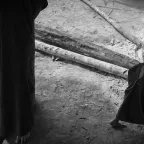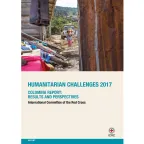The Interplay between IHL and IHRL
The Advanced IHL Learning Series are addressed to lecturers and trainers who wish to update their knowledge of the latest developments and challenges in international humanitarian law (IHL) and other …
The Advanced IHL Learning Series are addressed to lecturers and trainers who wish to update their knowledge of the latest developments and challenges in international humanitarian law (IHL) and other …
14-06-2017 A new ICRC report launched today reveals five times more civilians die in offensives carried out in cities than in other battles. The report, called 'I Saw My City Die', also found that …
Urban wars in Iraq, Syria and Yemen are amongst the deadliest conflicts of our time. People’s homes, their doorsteps, their streets, their schools and their hospitals are all part of the battlefield …
The Advanced IHL Learning Series are addressed to lecturers and trainers who wish to be abreast of the latest developments in international humanitarian law (IHL) and other related areas. The series …
Signature of the AP to the GCs of 12 August 1949 / LEBLANC, GÉRARD On 8 June 2017, the Protocols additional to the Geneva Conventions of 1949 will turn 40. To mark this anniversary, the ICRC will …
… insurgency, combat, fighting, hostility, terrorism, terror, warfare, battle, war-torn, …

… is equally important in States’ counter-terrorism activities amounting to armed …
Unión Alto Sanibeni is a small community of Asháninka people located in the jungle of central Peru. During the country's internal conflict in the 1980s and 1990s, violent clashes frequently broke out …

… in Beijing. What does the IHL say about terrorism? International Humanitarian Law or … has an obligation to try stop acts of terrorism. But by doing so, we also have to … when we are trying to deal with issues of terrorism during times of armed conflict. Does …
During 2016, the ICRC recorded 838 alleged violations of IHL and other humanitarian principles that affected nearly 18,600 people in Colombia. The organization is also concerned about the …

Try one of the following resources:
Created in 1863, the ICRC library, alongside the ICRC archives, provides an indispensable documentary reference on the organization itself and international humanitarian law.
International humanitarian law is based on a number of treaties, in particular the Geneva Conventions of 1949 and their Additional Protocols, and a series of other instruments.
Customary international humanitarian law consists of rules that come from "a general practice accepted as law" and that exist independent of treaty law.